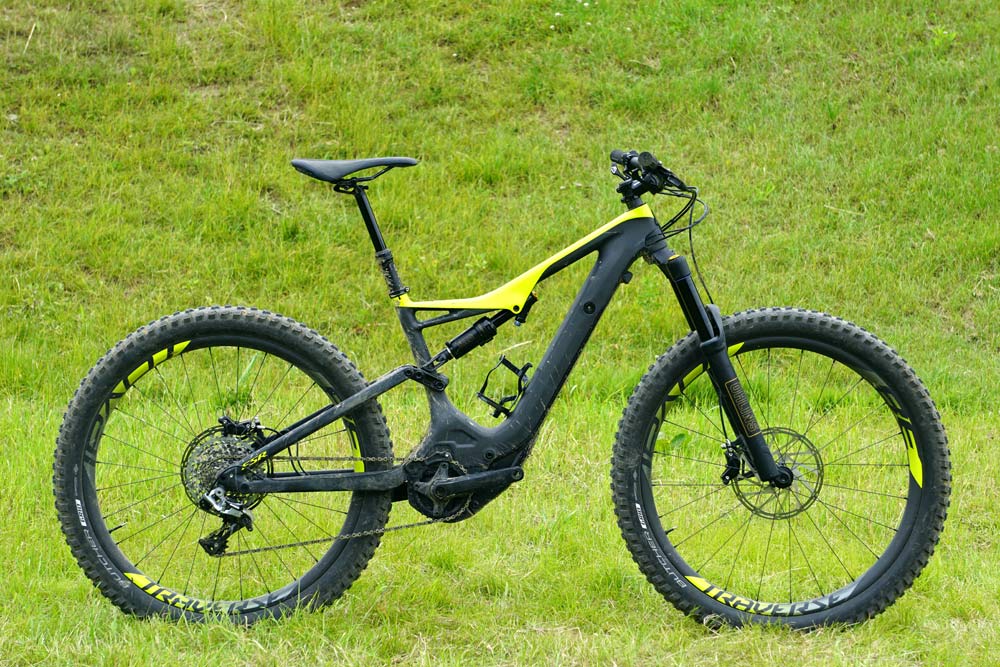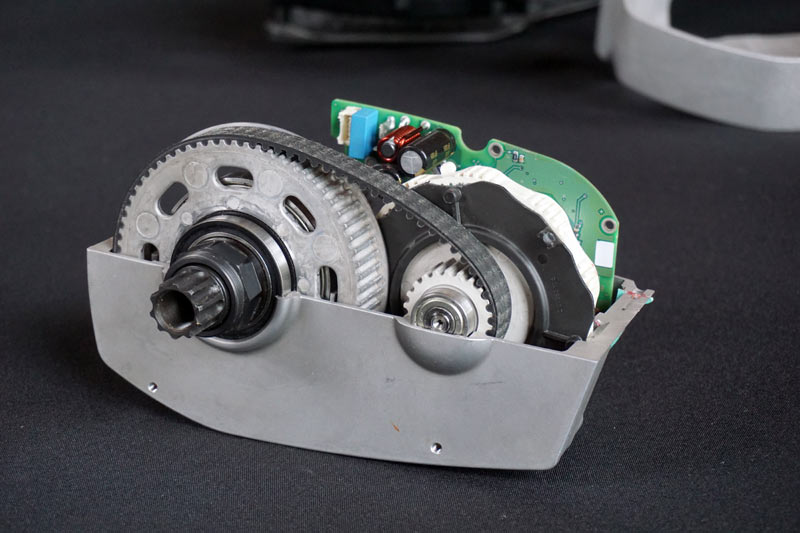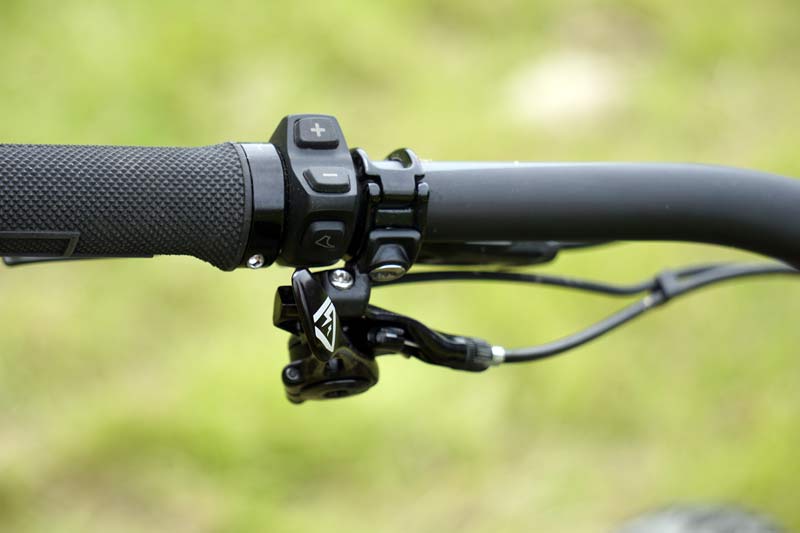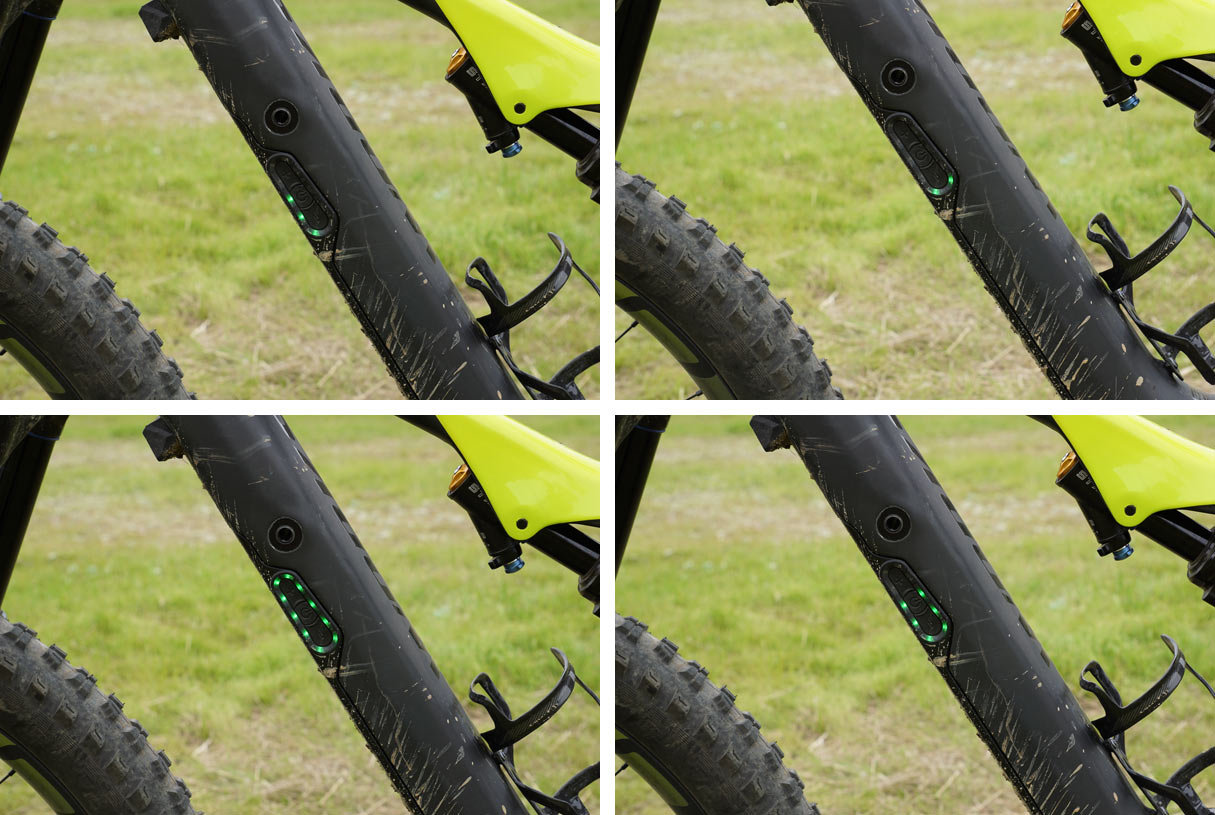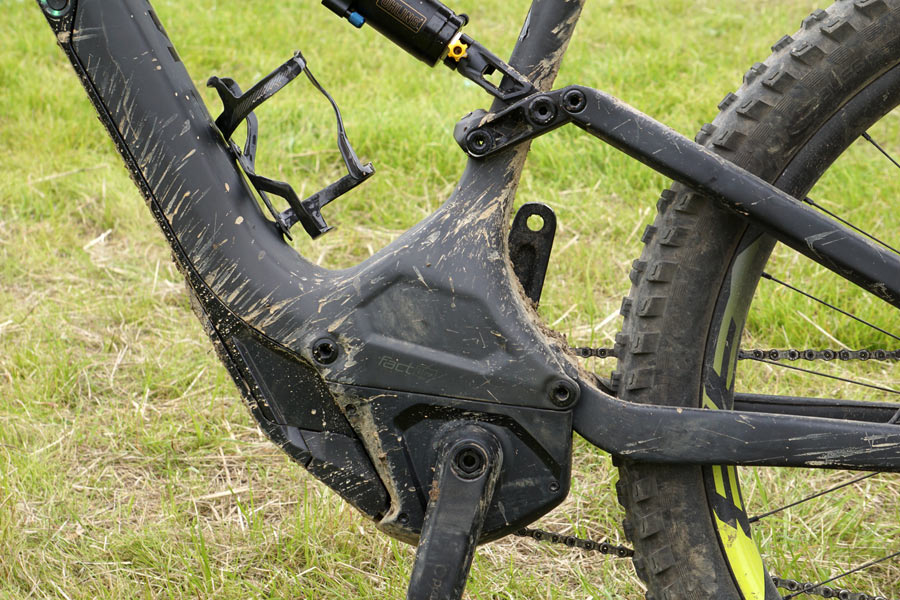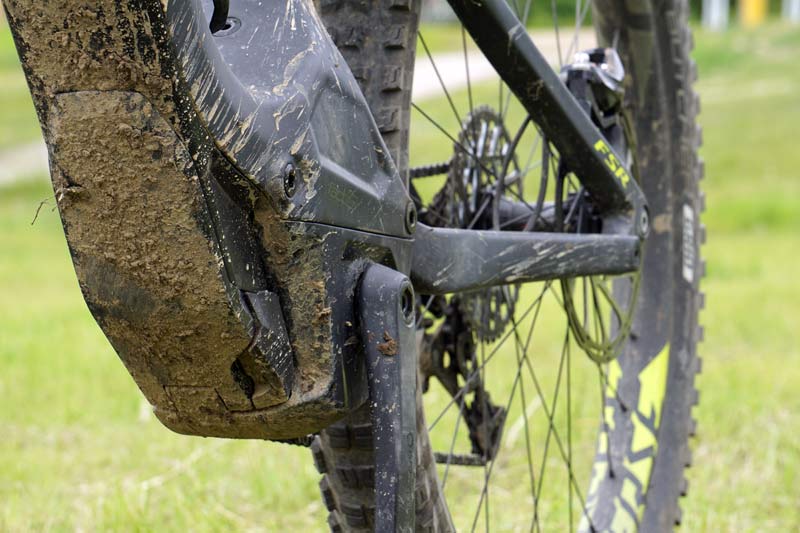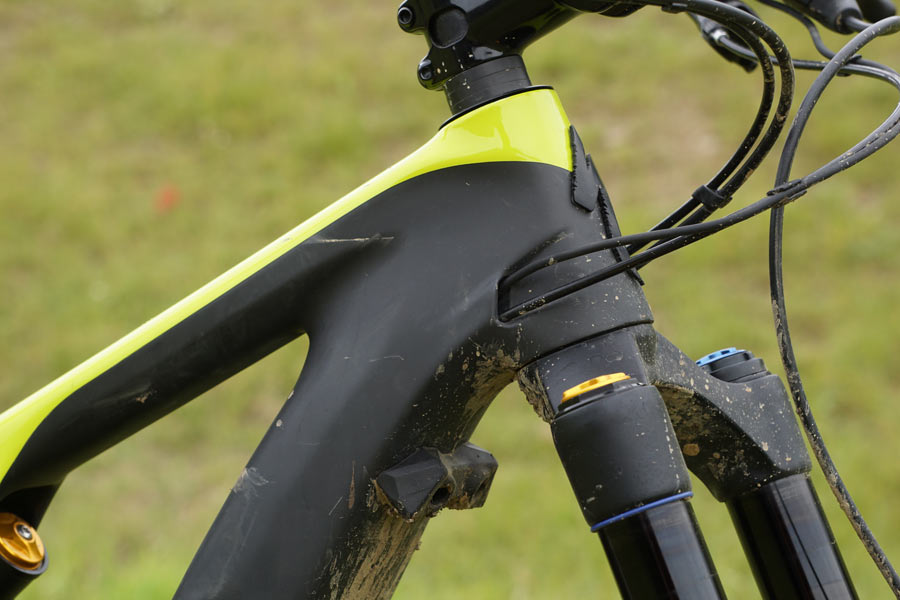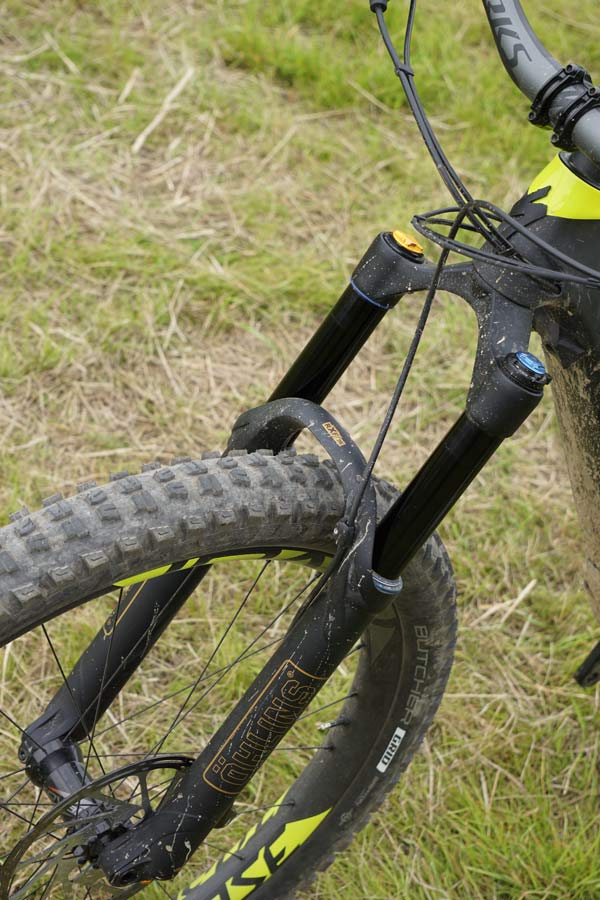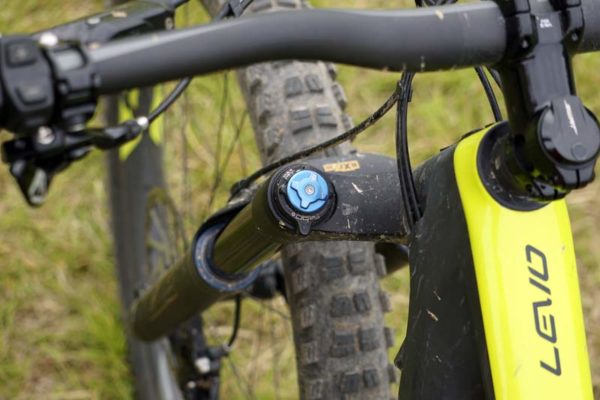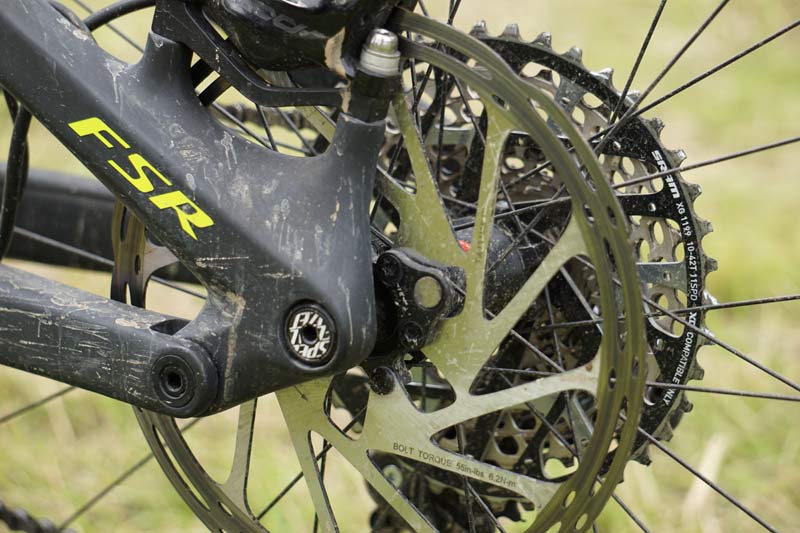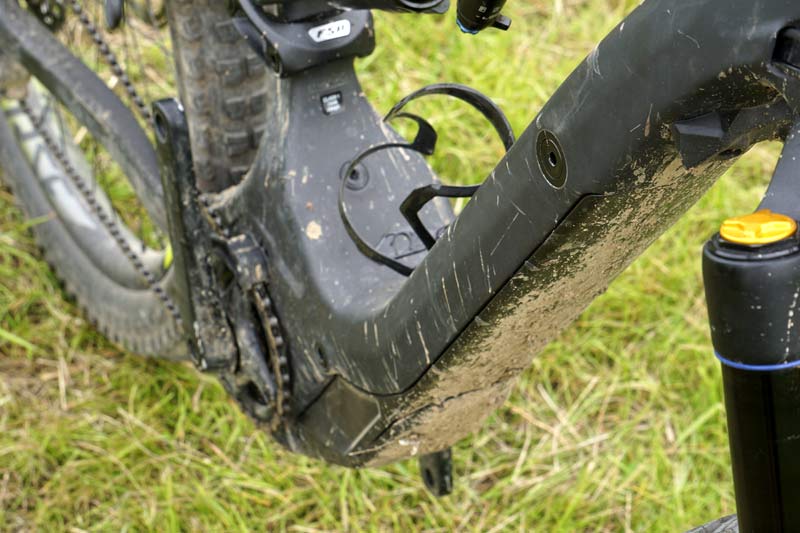The original Turbo Levo FSR launched a couple years ago, and like everything else, they eventually wanted to make it better.
So, on the all-new 2018 Specialized Turbo Levo FSR Carbon 6Fattie, the motor gets an upgrade, as does the control system. But the biggest change is a move to a carbon fiber frame -yes, the front triangle and rear section are both carbon- that dropped a massive amount of weight. It also made it stiffer, proving they’re out to make a high performance full suspension mountain bike regardless of where the power’s coming from…
SAVING WEIGHT WITH CARBON
One of the big challenges was the huge opening in the down tube for the battery. To overcome this structural challenge, they made the walls much thicker than you’d normally find on a carbon bike, and it wraps around more of the motor compartment. The battery is not a structural element, and the frame passes all safety testing without the battery installed. Meaning you could ride the bike without the battery (2.7kg).
The motor compartment is finished off with a machined alloy bracket that bolts onto the frame and also serves as the rear lower pivot mount.
This design dropped 500g from the alloy front triangle, and 150g from the rear triangle, which equates to a whopping 1.43lb on the S-Works level bike. Granted, on a bike weighing in around 52lb, dropping a few percentage points seems trivial, but that’s only part of the reason they did it. The rear is 40% stiffer than the alloy rear triangle, and overall it gains about 20% total stiffness compared to the full alloy model. So, on a bike this heavy with a motor to amplify your efforts, that stiffness means better overall performance.
THE TURBO MOTOR GETS BETTER THAN EVER
We recently rode the latest Turbo motor at the Turbo Vado commuter bike launch, and it’s really good. We covered a lot of the tech there, but suffice to say there’s no discernible drag when coasting, and the power kicks in smoothly. For the Levo, they upgraded it just a little more to become the Turbo 1.3 motor.
The new motor system has approximately 15% more torque across the cadence range, and it’s more efficient. It turns more of the battery’s energy into power, and it produces less heat. Because any good e-bike will start to reduce power to protect an engine from overheating, this improvement helps it continue to push full power for longer. They did this by updating the chassis design and adding thermal pads to pull more heat away from the motor. Other upgrades include a new electronic unit and new magnets, all of which combine to make everything works better, harder, faster, stronger.
Other hardware changes, too, starting with a sleeker Trail Remote that adds easily reachable and useable mode changes. And it’s included, which is a major upgrade from the original’s mode buttons located on the battery pack, meaning you had to reach down to change the assist level unless you ponied up for the available wireless remote.
There’s a Walk Assist button for hike-a-bike sections that gives you a little help waking the bike up the mountain by spinning the back wheel at 2mph. It’s that button just above the dropper post lever, positioned perfectly for holding while your walking your bike up the hill. We tested it on some gnarly, steep, no-fun-to-even-try-to-ride sections while hiking back up to rerun them (because they were wicked fun to come down!) and it works amazingly well. I’m guessing it would work pretty good for getting your bike up a flight of stairs, too.
The original downtube button now handles on/off duties, but the indicator lights are still there. Clockwise from top left, the battery charge level shows continuously, but it briefly shows mode when you cycle through them, going from Eco to Trail to Turbo. Keeping the display here keeps the handlebar very clean…and gives the rider the opportunity to use whatever cycling computer they want. Specialized has included a BTLE/ANT+ transmitter in the system so it can send mode and ride data to compatible computers (Garmin is on board already for head units and, soon, their watches). In addition to battery and system info, it sends your power output, which the motor is measuring anyway in order to match your effort, so it can still let you see how much work you’re doing throughout the ride. Think of it as a free power meter.
The Specialized Turbo app or the Garmin IQ app for Turbo will save your ride and then automatically classify it as an E-Bike ride when uploaded to Strava. No more post-ride editing to keep the purists from attacking your KOM.
Some of these updates are done through software, which will be available as a downloadable update for prior generation Levo bikes. The Mission Control app lets you customize the level of assist for each mode, and it has their Smart Control so you can set the distance you plan on riding and it’ll automatically set the level of assist to provide evenly portioned assistance throughout your ride.
Infinite Tune is new and adds another element to customizing the support level by including Max Motor Current. Standard setup matches motor current level to assist level, but now you can increase or decrease the maximum current. Without this, the pre-set current was limited in Eco and Trail, regardless of what percent you set the assist at. So, even if you set the assist to 90%, the system might still be limited current to 60%, which means it would only assist at 90% up to 60% of max current, at which point the assist would fall off the faster you pedaled. Now, you set the two parameters independently, to the motor can assist at whatever percent you set up to 100% of the available current. It sounds confusing, but for riders that want to train hard on this, it’s a great tool. Look for this update to hit the app store in mid-July 2017.
TURBO LEVO FSR CARBON DETAILS
Shown here is the S-Works model, which will now come with a 150mm Ohlins fork, a 10mm increase from the original Levo. They made this change because the Levo started out with 3.0 tires, but they found that a 2.8 Butcher offered equally good (or better) traction without suffering through the mud. With the smaller tires, the BB height dropped slightly, so the longer travel fork brought it back up to reduce rock strikes on the motor housing.
Levo FSR Carbon Expert/Comp models use an alloy rear end, but same carbon front end with 500g savings. They all use the same hardware, so you could upgrade your current Levo frame to this one and just port over the motor, battery and electronics. Geometry carries over unchanged save for that fork travel increase.
Across the line, spec updates bring everything up to speed with generally better brakes and suspension. Brakes now run 200mm rotors front and rear to help reel in the speed on these heavier bikes.
Rear travel stays at 135mm. The rear end and fork have Boost spacing, so it’s compatible with 29er wheels and tires, too, but comes stock with 27.5 x 2.8.
The S-Works model gets Ohlins suspension front and rear, all other models get Rockshox forks and shocks.
The bikes come with SRAM drivetrains, but not the e-bike specific EX1 group that SRAM introduced last May. That EX1 group features a one-click shifter to limit shifting in both directions to a single gear at a time because the torque could jumble things up if you were trying to jump over a couple of gears. Specialized wanted to use wider range traditional 1×11 MTB group, so they had SRAM customize a standard 11-speed mountain bike shifter to only make one shift at a time in either direction.
PRICES, MOTOR & SPECS
They’ll come with this new pop-up SWAT tool inside the steerer tube. Just swivel the cap around and it pops up, James Bond style. I believe I heard them say it was available separately.
The S-Works Carbon models get a FACT 11m carbon frame with 504Wh battery and the new SRAM Code brakes.
Expert Carbon ($7,500), Comp carbon ($5,500) and alloy ($4,500) also get a 504Wh battery with SRAM Guide RE brakes. There’s also a base Base alloy model with a 460Wh battery, but the Turbo 1.3 motor comes on all. The Levo Hardtail uogrades to the 1.2 motor found on the new Vado.
Look for alloy models to hit dealers very soon, and the carbon ones in September.
